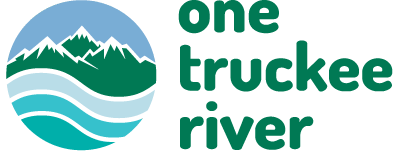Rain, Rain, Go Away…. In the Storm Drain?
Rain, rain, go away, so we can all go outside and play. With all the recent spring precipitation we’ve been having, this age-old nursery rhyme may be running through your mind. But have you ever wondered where all the rain goes?
If your answer is no, get ready to learn all about it in this blog post. Take out your umbrella, pull on your rain boots, and get ready for a course in Stormwater 101.
Lesson 1: What is stormwater?
The first thing you need to know about stormwater is what it is, and this is pretty simple. Stormwater is exactly what it sounds like - water that comes from a storm. It could be rain or it could be from melting snow, but either way it originates from a storm and falls to the earth. From there, it either soaks into the soil, pools and evaporates, or moves across surfaces looking for the lowest point (remember gravity is a strong force and water never goes uphill), this is when it’s called runoff.
Lesson 2: What is a storm drain?
So when there’s too much stormwater for all the soil to soak up, all the surface runoff needs somewhere to go. This is why engineers have installed storm drains in our streets. Storm drains are those metal grates and holes in the sidewalk curb. And while they’re not much to look at, without them our streets would flood every time it rains.
Lesson 3: Storm Drain vs. Sanitary Sewer
So what’s the difference between a storm drain and the sewer? They look very similar from above, but the real difference is buried below ground. They both have separate networks of pipes which take water and move it around. The difference lies in where the water goes. The water in sewer pipes (i.e. down your toilet and sinks) goes to a wastewater treatment plant. All of that water gets cleaned in a complex process (you can read more about it in one of our previous blogs) before it’s returned to the Truckee River. On the other hand, the water that goes down the storm drain goes into the Truckee River, sans cleaning. Okay, louder for the people in the back - the water going down storm drains doesn’t get cleaned, and it goes straight to the Truckee River!!!

Lesson 4: Non-point Source Pollution
Wow! If this water isn’t cleaned, then it must not be harmful, right? Guess again. Have you ever thought about all the pollutants on our streets? There’s a ton of gross stuff like cigarette butts, litter and trash, oil and antifreeze from cars, dirt, pet waste from when people don’t pick up after their dogs, pesticides and fertilizers that wash off lawns when sprinklers spray in the street, soapy water from washing cars in driveways, heavy metals from car brakes, and the list could go on.
So what’s the big deal? Is the occasional cigarette butt or plastic water bottle really that bad? Well, the problem is these are non-point source pollutants, which means they come from lots of different sources. If it was coming from just one source, we could easily put a stop to it, but because non-point source pollutants come from lots of different sources, they’re difficult to stop. And when they come from many sources, they add up and quickly turn from a small problem into a very big one. For example, Washoe County Regional Animal Services estimates there are 116,000 dogs in Washoe County. If on average every dog poops ½ lb. a day, that is 58,000 lbs. of poop every day! Just think if no one picked up all that poop and it all washed into the Truckee River! Not only is that gross, but pet waste can also carry harmful bacteria such as Escherichia coli (E. coli). And did you know the Truckee River is a major source of our drinking water? Starting to understand why non-point source pollution is bad and why it’s important to reduce it?
Lesson 5: So What Can I Do?
Now you understand what stormwater is, how it flows down the storm drain, and how it carries non-point source pollutants into the Truckee River. Finally, let's talk about what you can do to help. Here’s a list of a few simple things you can do everyday:
- Always pick up litter and keep a lid on your trash so it doesn’t blow away.
- Try reducing the amount of trash you create. Refuse a straw, refill a reusable water bottle, and take a cloth bag to the grocery store.
- Make sure and properly maintain your car so it doesn’t leak oil or antifreeze.
- Always pick up after your dog. Keep a handy supply of doggie bags every time you go out for a walk.
- Always take your car to a carwash; don’t wash it in the driveway. Carwash facilities are required to recycle their water and dispose of it in the sanitary sewer. This saves water and keeps pollutants out of the river.

